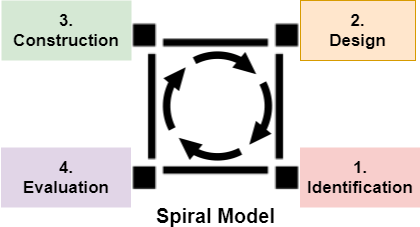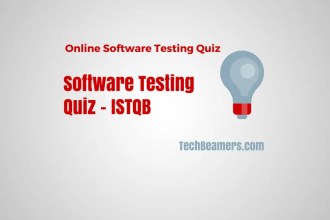Have you heard about the Spiral Model or Sprial Development Model? It is a revolutionary software development approach that takes the standard SDLC to the next level.
By breaking down the development process into smaller, iterative cycles, the Spiral Model minimizes risks and ensures continuous improvement. Each loop represents a phase of development, allowing for incremental builds and ongoing refinement.
What’s so unique about the Spiral Model? It’s a blend of two powerful development paradigms – iterative and linear. This means that it combines the best of both worlds, with a heavy focus on risk identification and management.
So why settle for a traditional waterfall model when you can embrace the Spiral Model? Let’s take a journey through this exciting approach and see how it can transform the way you approach software development.
Spiral Model
How does Spiral Development Model work?
The spiral model carries out development in loops. Each iteration also known as a phase has four stages. A software plan repeatedly passes through these phases in repetitions called Spirals.
What are different Spiral phases?
It has the following four phases.
1. Identification
This stage begins with collecting the feature requirements in the baseline spiral. In the ensuing spirals as the product evolves, the discovery of system requirements, components info, and unit-level inputs occurs in this phase.
This stage also involves learning the system requirements through constant communication between the client and the system analyst. At the end of the spiral, the software gets deployed in the unique market.
2. Design
The Design phase begins with a basic thought of the mindmap in the first spiral and involves the architectural design, logical layout of the modules, physical product prototype, and the final design in the subsequent spirals.
3. Construction
The build stage refers to the production of the exact software product at every iteration. In the baseline cycle, when the software is just an idea and the design is getting conceived as a prototype happens in this stage to learn client experience.
In the ensuing spirals with greater clarity on requirements and design specifications, a working copy of the software product known as build gets delivered with a proper version. It is then gets provided to the clients for their input.
4. Evaluation and Risk Analysis
Risk Analysis comprises classifying, measuring, and observing the technical feasibility and business risks, such as schedule impact and cost escalations. After examining the build, at the end of the first repetition, the customer assesses the software and gives feedback.
The following model is a reflection of the Spiral Model, listing the actions in each stage.
Based on the client evaluation, the software development method enters the next iteration and consequently follows the direct approach to complete the feedback recommended by the customer. The process of iterations along the spiral lasts throughout the lifespan of the software.
When and where can I use the Spiral Model?
The Spiral Model is extensively used in the IT industry as it is in sync with the typical development method of any product, i.e., learning with maturity which comprises minimum uncertainty for the client and also for the development companies.
The following clues describe the typical uses of a Spiral Model.
1. When there is a fund constraint, a risk assessment is necessary.
2. In the moderate to high-risk products.
3. Long-term project engagement because of possible changes to financial priorities as the requirements shift with time.
4. The client is not sure what they need in this case.
5. Conditions are complicated and need assessment to bring certainty.
6. Brand-new product line which must go to market in stages to get adequate client feedback.
7. Some core changes may occur in the product during the building phase.
Spiral Development – Pros and Cons
The plus point of the spiral model is that it enables components of the product to add when they are available or active. It eliminates any possibility of a conflict with any late requirements or the design.
This process is compatible with approaches that have multiple software builds and releases which permits forming an orderly shift to a maintenance exercise. Another unique aspect of this approach is that the spiral model requires early user engagement in the system development exercise.
On the other side, it takes dogmatic management to conclude such products, and there is a gamble of going the spiral in an indeterminate loop. So, the system of change and the amount of taking change requests is critical to building and deploying the software favorably.
Advantages of Spiral Development
Here are a few of the strengths of the Spiral Model.
1. Evolving requirements can get accepted.
2. Welcome the use of prototyping.
3. Feature requests have accurate definitions.
4. Early product builds are available.
5. Development can have subparts, and the development of the sensitive components happens earlier to minimize the risk involved.
Disadvantages of Spiral Development
Here are a few of the shortcomings of the Spiral Model.
1. Handling management tasks is tough.
2. Less clarity on the final stage of the project.
3. May not work for small or low-risk projects and raise the cost involved.
4. Process lifecycle is complicated.
5. Spiral may outrun the expected no. of iterations.
6. More are the phases, and more get the need for product documentation.
Hey, before you go, we want to let you in on a little secret – our website is a treasure trove of knowledge waiting to be discovered!
- SDLC and Seven SDLC Phases In a Nutshell
- SDLC V Model – A Step-by-Step Guide for Beginners
- Page Object Model Or Properties File – Which One Should You Use?
- 100+ Manual Testing Interview Questions
Thanks for choosing Techbeamers.





